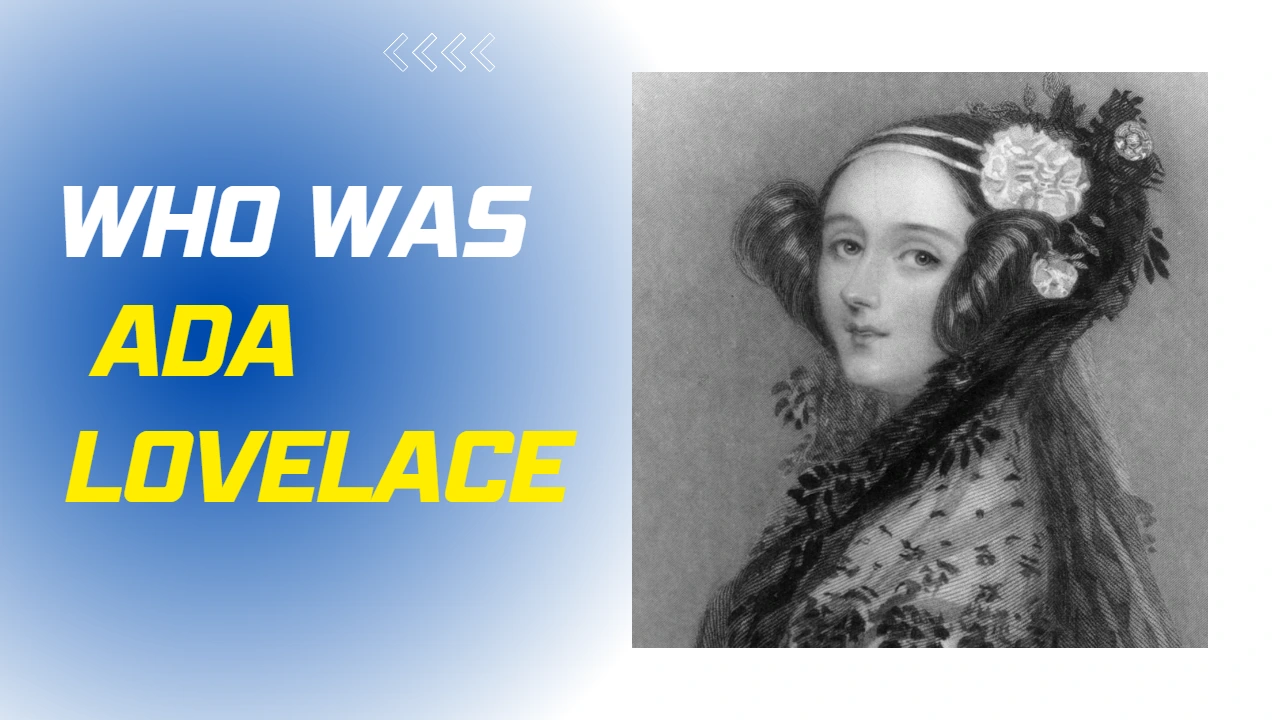Ada Lovelace was an English mathematician and writer who lived in the 19th century. She is chiefly known for her work on Charles Babbage’s early mechanical general-purpose computer, the Analytical Engine. Lovelace wrote the world’s first algorithm intended to be processed by a machine and she is credited with being the world’s first computer programmer. Her notes on the engine include a description of how codes could be created to generate graphics and music, making her an important figure in the history of computer science and a visionary for future developments in technology.
What is Ada Lovelace’s most famous invention?
Ada Lovelace is not credited with inventing a specific device or technology. Rather, she is known for her work on Charles Babbage’s mechanical general-purpose computer, the Analytical Engine, and for writing the world’s first algorithm intended to be processed by a machine. This work makes her an important figure in the history of computer science and a visionary for future developments in technology.
Did Ada Lovelace Invent The Computer?
No, Ada Lovelace did not invent the computer. She worked on Charles Babbage’s mechanical general-purpose computer, the Analytical Engine, and is credited with writing the world’s first algorithm intended to be processed by a machine. Her contributions to the development of computing and her understanding of the potential applications of computers beyond pure calculation made her an important figure in the history of computer science and a visionary for future developments in technology. However, she did not invent the computer itself.
- Discover the Life-Changing Wisdom of Kristina Jones
- Zac Brown and Wife Kelly Yazdi Announce Separation
- Unveiling the Remarkable Life and Legacy of Mary Todd Lincoln
- Baseball Player Allergic to Chocolate: A Curious Ailment
- Ethan Slater – A Talented Entertainer Making Waves in Hollywood
- Leon Bailey: The Rising Star Lighting Up the Football World
- Frederic Forrest: A Versatile Actor with an Enduring Legacy
- Devon Larratt: The Phenomenal Arm Wrestling Champion
- Julian Sands: A Versatile Actor with Timeless Charm
- Kim Petras: The Sensational Rise of a Pop Icon
How Did Ada Lovelace Change The World?
Ada Lovelace changed the world through her contributions to the field of computer science. Her work on Charles Babbage’s mechanical general-purpose computer, the Analytical Engine, led to her writing the world’s first algorithm intended to be processed by a machine. Her notes on the engine included a description of how codes could be created to generate graphics and music, demonstrating her understanding of the potential applications of computers beyond pure calculation. This made her a visionary for future developments in technology and earned her a place in the history of computer science as a pioneering figure. Her contributions helped lay the foundation for modern computing and inspired future generations to pursue careers in technology and computer science.
How Did Ada Lovelace Die?
Ada Lovelace died on November 27, 1852, at the age of 36. She died of uterine cancer, which was a common cause of death in the 19th century. Her death came at a young age, just as she was reaching the peak of her intellectual and creative powers, and before she could see the full realization of her vision for the future of computing. Despite her untimely death, Ada Lovelace’s contributions to computer science have had a lasting impact and continue to be celebrated and recognized as an important part of the history of technology.
Who Was The First Coder?
Ada Lovelace is often credited as the world’s first computer programmer, due to her work on Charles Babbage’s mechanical general-purpose computer, the Analytical Engine. Lovelace wrote the world’s first algorithm intended to be processed by a machine and her notes on the engine included a description of how codes could be created to generate graphics and music. Her contributions to the development of computing and her understanding of the potential applications of computers beyond pure calculation make her an important figure in the history of computer science and a visionary for future developments in technology.
Who Invented Coding?
Coding, or writing computer programs, was not invented by a single person. It is a field that evolved over time through the contributions of many individuals and teams. Some of the early pioneers of computer science, such as Ada Lovelace and Alan Turing, laid the foundations for the development of coding.
However, the evolution of coding as a field continued through the contributions of many others over the years, leading to the sophisticated and diverse field that it is today.
Who Is The King of Coding?
There is no single “king of coding.” Coding is a highly collaborative field, and the contributions of many individuals and teams are essential to its ongoing development and progress. The title of “king of coding” is not a well-defined or recognized position, and the term is not commonly used in the field of computer science. Instead, the field recognizes a diverse group of talented programmers, developers, and computer scientists who have made important contributions to the advancement of technology and computing.
Early Life Of Ada Lovelace
Ada Lovelace was born on December 10, 1815, in London, England. She was the daughter of the famous poet Lord Byron and his wife, Anne Isabella Milbanke. Ada’s mother was a mathematician and a music lover, and her father was a celebrated poet who had a passion for science and technology.

Ada’s upbringing was unconventional, as her parents separated when she was still an infant and her father died when she was just eight years old. Despite this, Ada’s mother encouraged her to pursue her education and interests in mathematics and music. Ada was a talented student and showed a strong aptitude for mathematics and logic.
Ada was introduced to Charles Babbage in 1833, and the two quickly became friends. Babbage showed Ada his design for the Analytical Engine, and she was immediately fascinated by the potential of the machine. Ada’s work on the Analytical Engine and her notes on the engine, which includes the world’s first algorithm intended to be processed by a machine, earned her a place in the history of computer science as a pioneering figure and a visionary for future developments in technology.
Babbage and the Analytical Engine
Charles Babbage was an English mathematician, philosopher, and inventor who is best known for his design of the Analytical Engine, a mechanical general-purpose computer. Babbage’s design for the Analytical Engine was revolutionary and is considered to be a precursor to the modern computer.
The Analytical Engine was a mechanical device that used punched cards to perform mathematical calculations. It was designed to be capable of performing any calculation that could be expressed in mathematical terms, making it a general-purpose computer. The design of the Analytical Engine included provisions for input, processing, and output, and it was intended to be capable of solving a wide range of mathematical problems.
Babbage’s design for the Analytical Engine was never completed, but his ideas and concepts laid the foundation for future developments in computing. Ada Lovelace was one of the few people who fully understood the potential of the Analytical Engine and its implications for the future of technology. Her work on the engine and her notes, which include the world’s first algorithm intended to be processed by a machine, earned her a place in the history of computer science as a pioneering figure and a visionary for future developments in technology.
Ada Lovelace Personal Life
Ada Lovelace was born into a famous and influential family, but her personal life was marked by scandal, tragedy, and ill health. She was the daughter of the famous poet Lord Byron and his wife, Anne Isabella Milbanke. Her parents separated when she was still an infant, and her father died when she was just eight years old.
Ada was married to William King in 1835, and the couple had three children together. Despite her marital and family obligations, Ada continued to pursue her interests in mathematics and technology and maintained a close relationship with Charles Babbage.
Ada’s health was always delicate, and she suffered from a variety of ailments throughout her life, including depression, migraines, and menstrual irregularities. She was also a heavy smoker, which may have contributed to her poor health.
Ada died of uterine cancer on November 27, 1852, at the age of 36. Her death came at a young age, just as she was reaching the peak of her intellectual and creative powers, and before she could see the full realization of her vision for the future of computing. Despite her untimely death, Ada Lovelace’s contributions to computer science have had a lasting impact and continue to be celebrated and recognized as an important part of the history of technology.
Ada Lovelace Facts
Here are some key facts about Ada Lovelace:
- Ada was born on December 10, 1815, in London, England.
- She was the daughter of the famous poet Lord Byron and his wife, Anne Isabella Milbanke.
- Ada was introduced to Charles Babbage in 1833 and the two quickly became friends. Babbage showed Ada his design for the Analytical Engine, and she was immediately fascinated by the potential of the machine.
- Ada wrote the world’s first algorithm intended to be processed by a machine, which she wrote for Babbage’s Analytical Engine.
- Ada’s work on the Analytical Engine earned her a place in the history of computer science as a pioneering figure and a visionary for future developments in technology.
- Ada was married to William King in 1835, and the couple had three children together.
- Ada’s health was always delicate, and she suffered from a variety of ailments throughout her life.
- Ada died of uterine cancer on November 27, 1852, at the age of 36.
- Ada’s contributions to computer science have had a lasting impact and continue to be celebrated and recognized as an important part of the history of technology.
- Ada is considered to be the world’s first computer programmer, and she is often referred to as the “first lady of software”.
Ada Lovelace Legacy
Ada Lovelace’s legacy is that of a pioneering figure in the history of computer science and a visionary for future developments in technology. Her work on Charles Babbage’s Analytical Engine and her notes, which include the world’s first algorithm intended to be processed by a machine, established her as a key figure in the early development of computing.
Today, Ada Lovelace is remembered as a symbol of female empowerment and a role model for women in science, technology, engineering, and mathematics (STEM) fields. Her legacy continues to inspire young women to pursue careers in these areas and to challenge gender stereotypes and biases.
Ada’s name has also become synonymous with excellence in computer programming and technology. The Ada programming language was named in her honor, and there are numerous programs and initiatives aimed at promoting diversity and encouraging women and girls to pursue careers in technology and computing.
In conclusion, Ada Lovelace’s legacy is one of creativity, innovation, and vision, and her contributions to the field of computer science continue to be celebrated and recognized as an important part of the history of technology.
- Discover the Life-Changing Wisdom of Kristina Jones
- Zac Brown and Wife Kelly Yazdi Announce Separation
- Unveiling the Remarkable Life and Legacy of Mary Todd Lincoln
- Baseball Player Allergic to Chocolate: A Curious Ailment
- Ethan Slater – A Talented Entertainer Making Waves in Hollywood
- Leon Bailey: The Rising Star Lighting Up the Football World
- Frederic Forrest: A Versatile Actor with an Enduring Legacy
- Devon Larratt: The Phenomenal Arm Wrestling Champion
- Julian Sands: A Versatile Actor with Timeless Charm
- Kim Petras: The Sensational Rise of a Pop Icon














